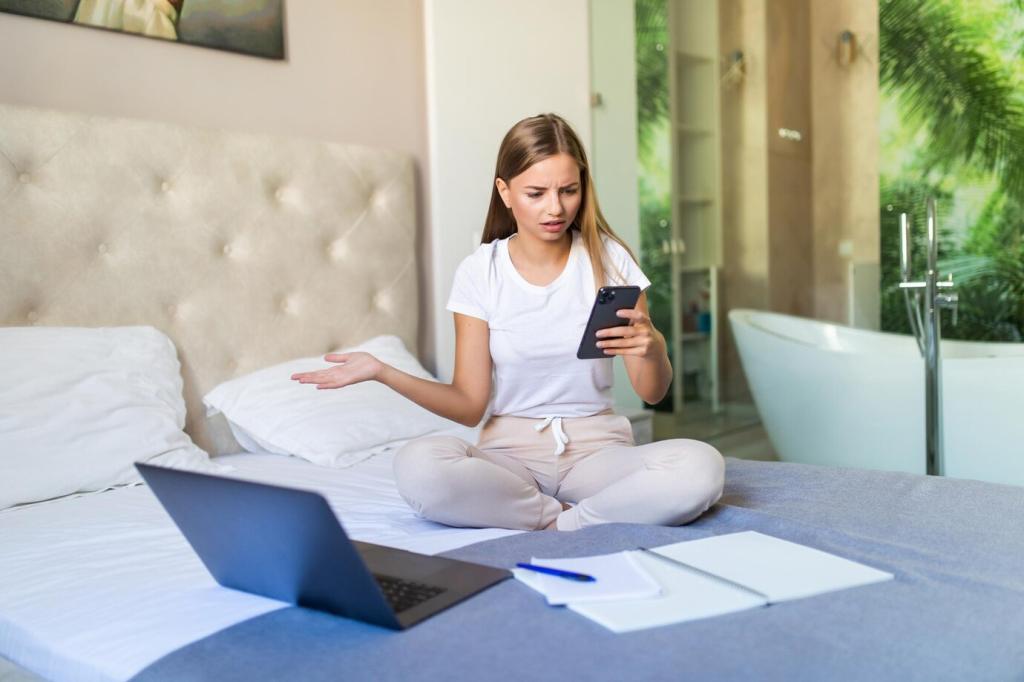
Reducing Screen Time at Work: Focus Better, Feel Better
Chosen theme: Reducing Screen Time at Work. Welcome to a practical, human-first space for reclaiming your attention, protecting your eyes, and finding deeper satisfaction in your workday. Explore ideas, try experiments, and share your wins—your focus story can inspire someone else.
The Cognitive Switching Cost
Constant screen hopping drives micro-interruptions that quietly drain momentum. Research on attention shows that after a digital interruption, it can take many minutes to regain deep focus. Reducing screen time at work protects stretches of uninterrupted thinking your best ideas depend on.
Eyes, Posture, and Energy
Extended screen sessions encourage shallow blinking, forward head posture, and tense shoulders. Try the 20-20-20 rule, gentle neck resets, and micro-breaks. Reducing screen time at work isn’t just about fewer pixels—it’s about sustaining energy, comfort, and long-term well-being.
A Quick Story: Maya’s Midday Reset
Maya, a product designer, began closing her laptop at noon for ten minutes of analog sketching. Within a week, her concepts improved and headaches faded. Reducing screen time at work created breathing room for creativity to stretch, surprise, and eventually accelerate delivery.







Notification Hygiene
Turn off badges, batch notifications, and set VIP exceptions. Use Focus modes with clear labels tied to calendar blocks. Reducing screen time at work often starts with fewer pings, which reduces reflexive checking and lets your mind settle into meaningful tasks again.

Make It a Little Boring
Switch your phone to grayscale, disable infinite scroll where possible, and remove dock icons that lure you. Reducing screen time at work is easier when your environment lowers novelty, dampens compulsive taps, and returns your attention to planned, deliberate actions.

Boundaries by Automation
Schedule Do Not Disturb during deep work, auto-reply during focus blocks, and set app limits for messaging tools. Reducing screen time at work becomes sustainable when boundaries are automatic, consistent, and respected by teammates through clear norms and shared calendars.
Response-Time Agreements
Publish channel expectations: urgent phone, important email within a day, chat within business hours only. Reducing screen time at work depends on agreements that protect focus, prevent midnight pings, and clarify when speed actually matters versus when depth is the goal.
Chat and Email Etiquette
Encourage summary-first messages, clear asks, and quiet hours. Use threads, not pings, for non-urgent conversations. Reducing screen time at work grows easier when communication is concise, asynchronous by default, and friendly to people doing deep, consequential thinking.
Measure, Iterate, Celebrate
Record one week of screen time: total hours, app categories, and peak distraction times. Note energy and mood patterns. Reducing screen time at work starts with clarity, revealing small bottlenecks that, once fixed, unlock calmer days and steadier, higher quality output.


Measure, Iterate, Celebrate
Pick one habit: two email batches, a daily offline ideation block, or a no-screen meeting. Track impact for two weeks. Reducing screen time at work compounds through small, repeatable wins rather than drastic changes that fade once novelty wears off.
